Two minute review
The Razer Huntsman v2 Analog may look familiar when compared to the Razer Huntsman Elite, but the similarities end at their shared appearance.
The Razer Huntsman V2 Analog is as feature-rich as a keyboard can get. For $249.99, Razer has thrown everything and the kitchen sink at it, including a robust keyboard design, durable body, fantastic mechanical switches, double-shot PBT keycaps, USB-passthrough, RGB bling, and all the media controls that your heart desires.
But it’s main draw is its new analog switches (hence, the name). Unlike traditional mechanical switches, the analog switches provide a ‘range’ of motion much like a joystick would on a Xbox or a PlayStation controller. Due to its analog nature - which is capable of sending a series of signals instead of just 0 or 1 like a digital switch - it is able to provide a more granular control over movement by adjusting the actuation force on-the-fly.
If that was too much tech jargon for you, here’s a simplified version: you can press on the key lightly to slowly move your in-game character (as if slowly moving a controller’s joystick upwards), while pressing it fully will make them run at their default speed. This can be used to accelerate a car in a similar fashion, or any other gameplay variation depending on your playstyle.
But for a price that costs as much as a next-gen console, this feature alone is a hard bargain for average players, as it doesn’t immediately provide any gameplay improvements.
Price and availability
The Razer Huntsman V2 Analog is priced at $249.99 (£249.99, around AU$330) on Razer’s website, and will be available from retailers from February 9 2021.
Design
The Razer Huntsman V2 Analog looks exactly like previous Huntsman models, which should come as no surprise. It retains the same ink-black aluminum chassis and an elevated keycap design to give it a distinctive look. It’s an attractive keyboard, especially with the RGB strip wrapped around it to give it a little more style.
The included wrist rest enhances the look even further. A magnetic connection ensures that the wrist rest sits flush with the keyboard, almost making it seem like it's a unibody design rather than a separate attachment. It has its own RGB underglow strip which you can sync with the rest of the keyboard to give it a full-bodied RGB effect. It’s rather nice looking in a dark room.
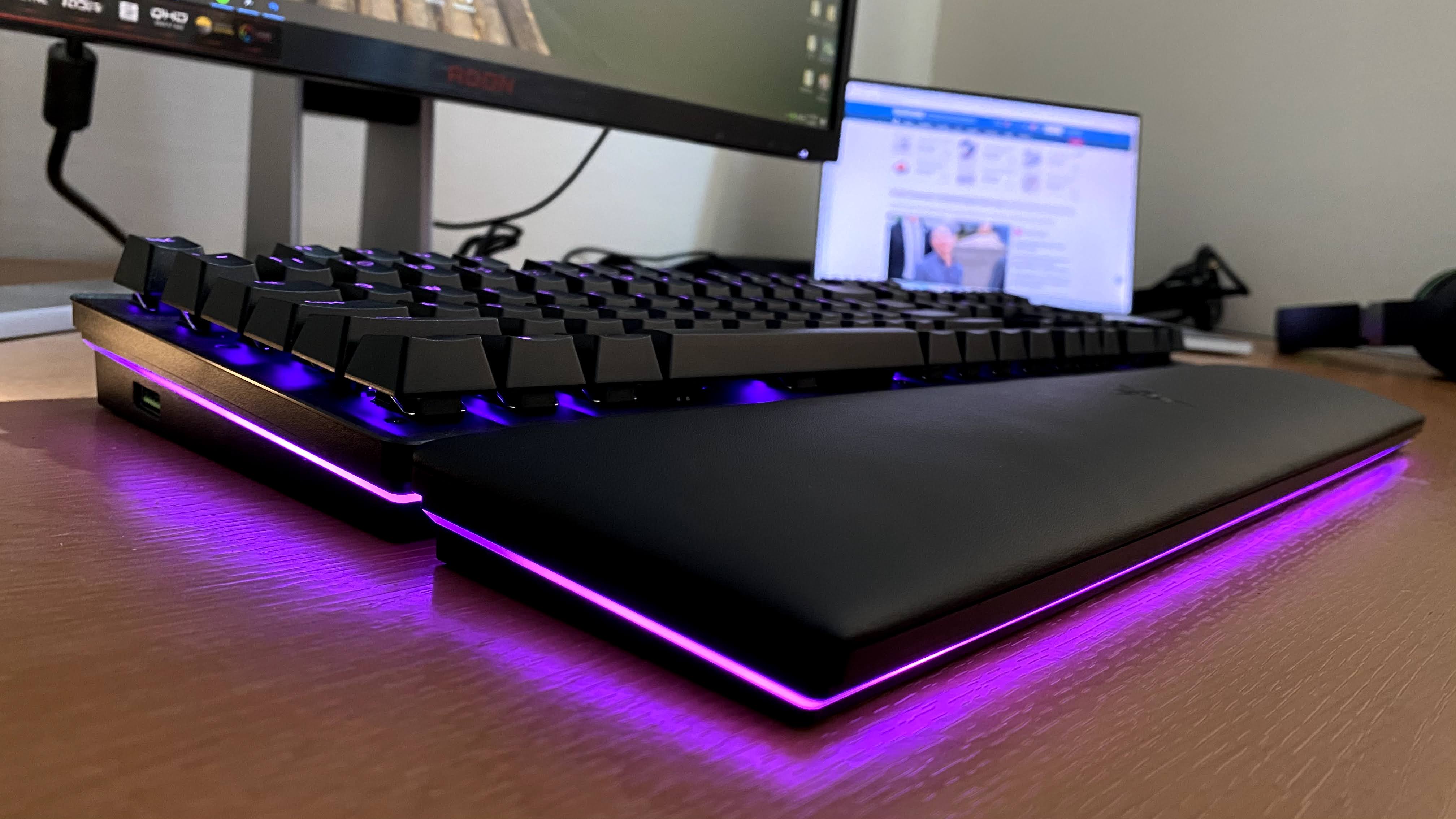
But a wrist rest’s primary job is to be comfortable, and we’re happy to report that it is. The foam fabric on it is padded just right for optimal comfort during longer sessions, and the sturdy plastic chassis provides excellent support. It doesn’t creak or groan under pressure, and feels sturdy to the touch.
Like the previous Huntsman keyboard, the V2 Analog also features a few discrete media controls. They aren’t mechanically-inclined like the rest of the keyboard, and neither are they RGB lit. However, the LED ring around the volume scroll wheel does provide some illumination. You can rewind, forward, and play/pause with the media keys, while the scroll wheel can adjust the volume as well as mute the audio by pressing the circular button on the top.
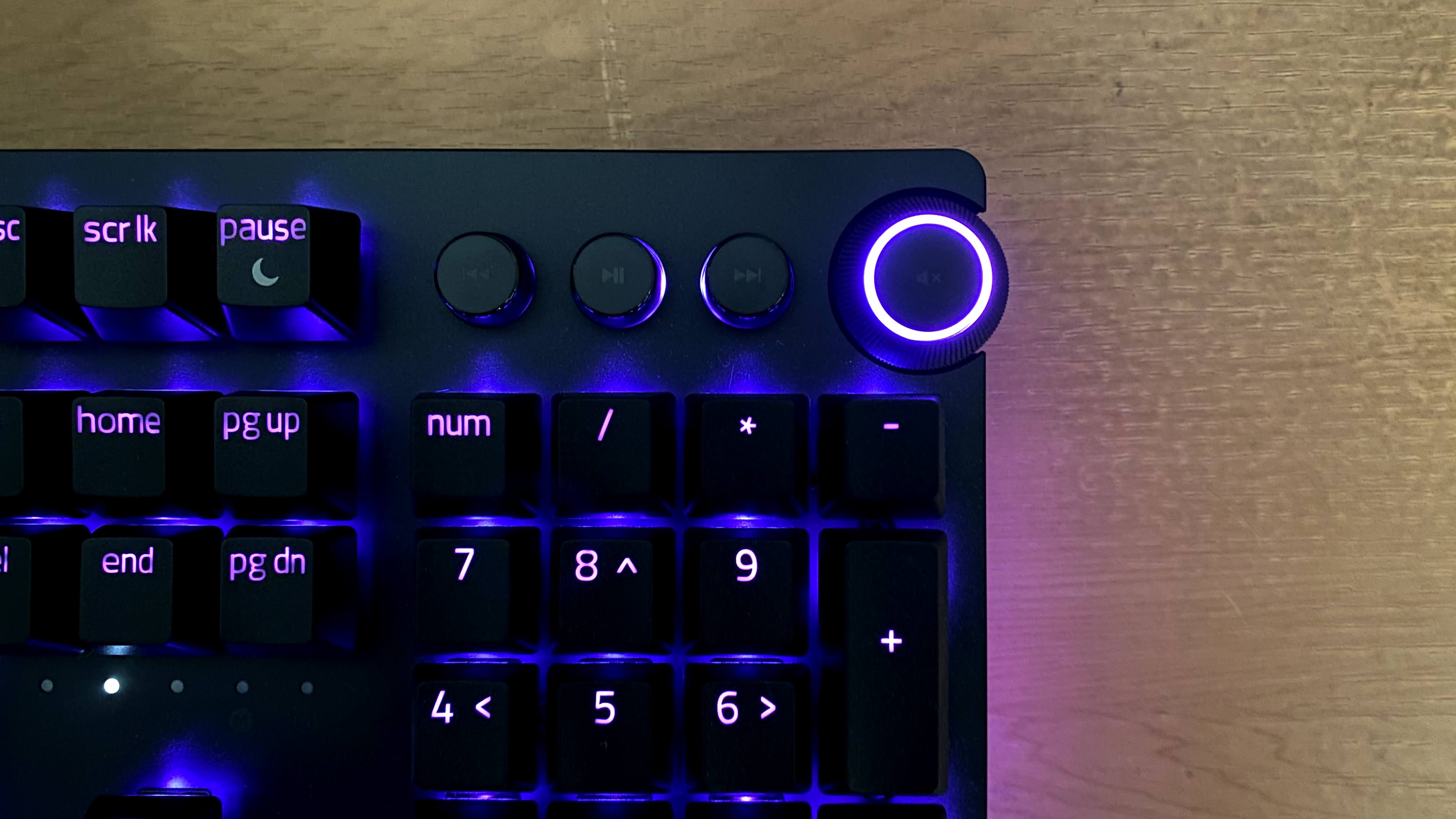
On the left of the keyboard you’ll find the sole USB 3.0 pass-through, which requires a separate connection on your PC. This brings us to the only gripe we have with the V2 Analog’s presentation: the cables. The USB pass-through and the keyboard itself are powered by separate USB connections, which means that the keyboard has two separate cables protruding from its top left side.
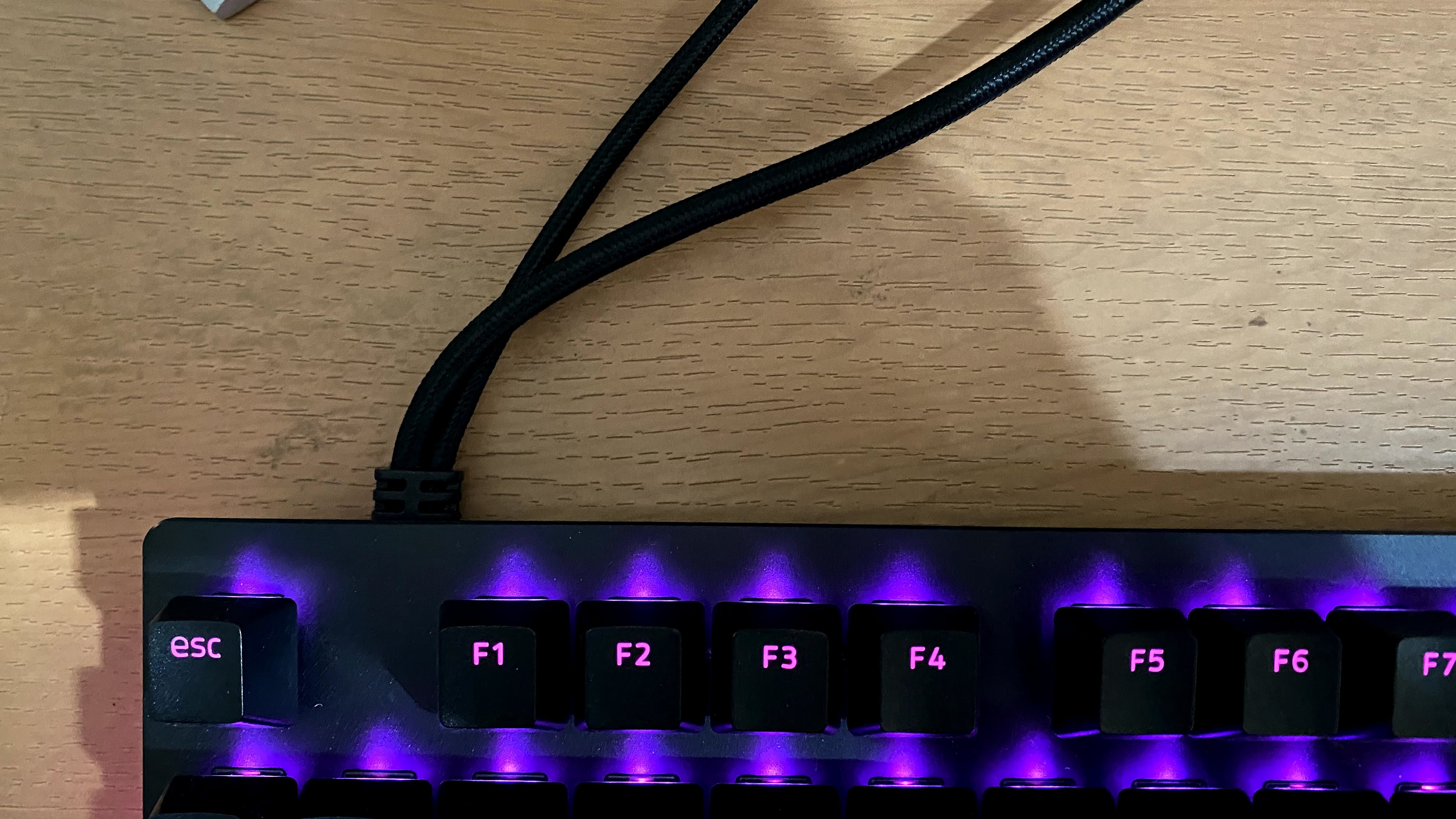
We wish Razer had either made them detachable, or combined them into a single cable that splits in the end because it just looks untidy otherwise. If you are into cable management, this will be a delight, but for those looking for a clean setup, this is nuisance.
Performance
So do the analog switches matter? Yes. And also, no.
The Razer Huntsman V2 Analog’s new namesake switches provide precise control over movements just like how you could on a controller’s joystick. Using an adjustable actuation force system that changes on-the-fly depending on how hard you are pressing on the key, you can have your in-game character, or a car, or a ship, move from slower speeds to higher speeds by varying the pressure on the keys. Razer says that this also gives you 360 degree movement control, rather than the 8-directional movement from a traditional keyboard, but those benefits aren’t immediately apparent - especially not to the average gamer like us.
Pressing down on a key to vary movement speed is a lot more difficult - or rather a more conscious effort - than doing the same via a joystick which has inherent resistance built-in to it. But it does work if you can execute it well, and it could very well develop into muscle memory after some point.
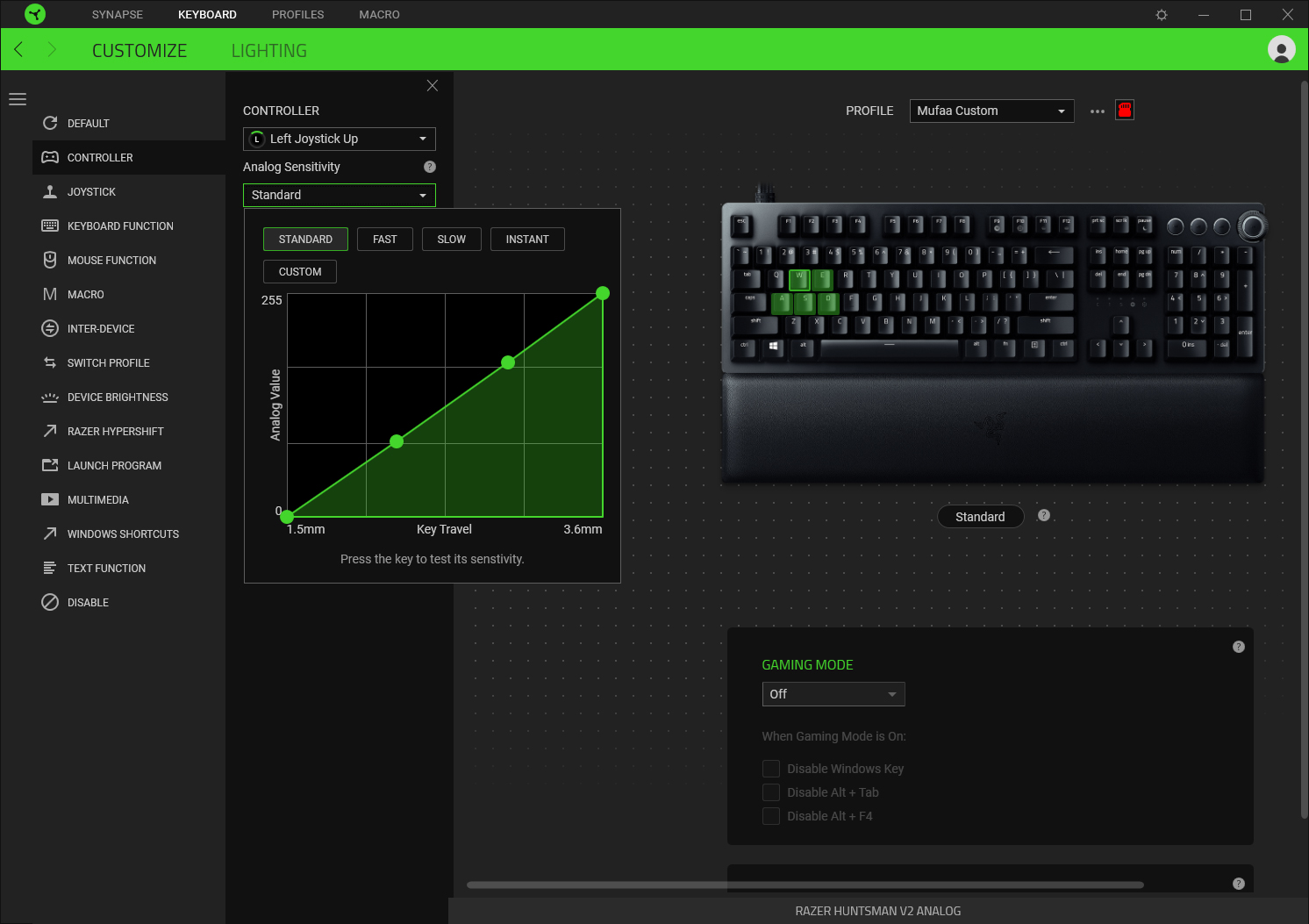
The V2 Analog has a wide range of actuation force. You can press as lightly as 1.5mm, or as deeply as 3.5mm (and everything in between) and the keyboard will accurately recognize the pressure applied on the switch and execute the command. But this won’t work on games right out of the box; you’ll have to set specific keys as a controller input via the Razer Synapse software.
For example, in a first-person shooter like Destiny 2, you will have to set the WASD movement keys as the left joystick in order to control the character and reap the benefits of the analog switches. So here, the ‘W’ key becomes the ‘Left Joystick Up’ configuration, the ‘A’ key becomes the ‘Left Joystick Left’ configuration, and so on, with each key having its own separate sensitivity setting. You can also set the keys to emulate any of the other controller inputs, such as the trigger buttons, the face buttons, and even the menu buttons.
Of course, for all of the above to work, the game needs to support simultaneous controller and mouse input, otherwise it won’t work. For games that do support it, you’ll have to deal with the on-screen button prompts constantly flipping between the two inputs.
We put the new switches to use on a number of different games, such as Rocket League, Dirt 4, Overwatch and Apex Legends. And yes, the keys do work just like they’re designed to, but we didn’t find ourselves moving any more precisely than we did on traditional switches. Yes, our character could walk slowly but in shooters this is rarely beneficial. In racing games, however, we did find it somewhat useful - we could accelerate and brake much more gradually, which helped in taking better turns. Still, we wouldn’t say that it was a game-changing experience.

The analog switches have one more trick up their sleeve that could find more utility among users. Using the Razer Synapse software, you can enable dual-step actuation to fire off two separate commands on a single key depending on how hard you press on it. For example, you can configure the ‘E’ button at 1.5mm actuation to execute an ability in Overwatch, and configure the ‘Q’ button at 2.9mm to use the ultimate ability if you press down further. You can measure how hard you are pressing on the key by looking at the meter on the Synapse software and adjust your actuation accordingly.
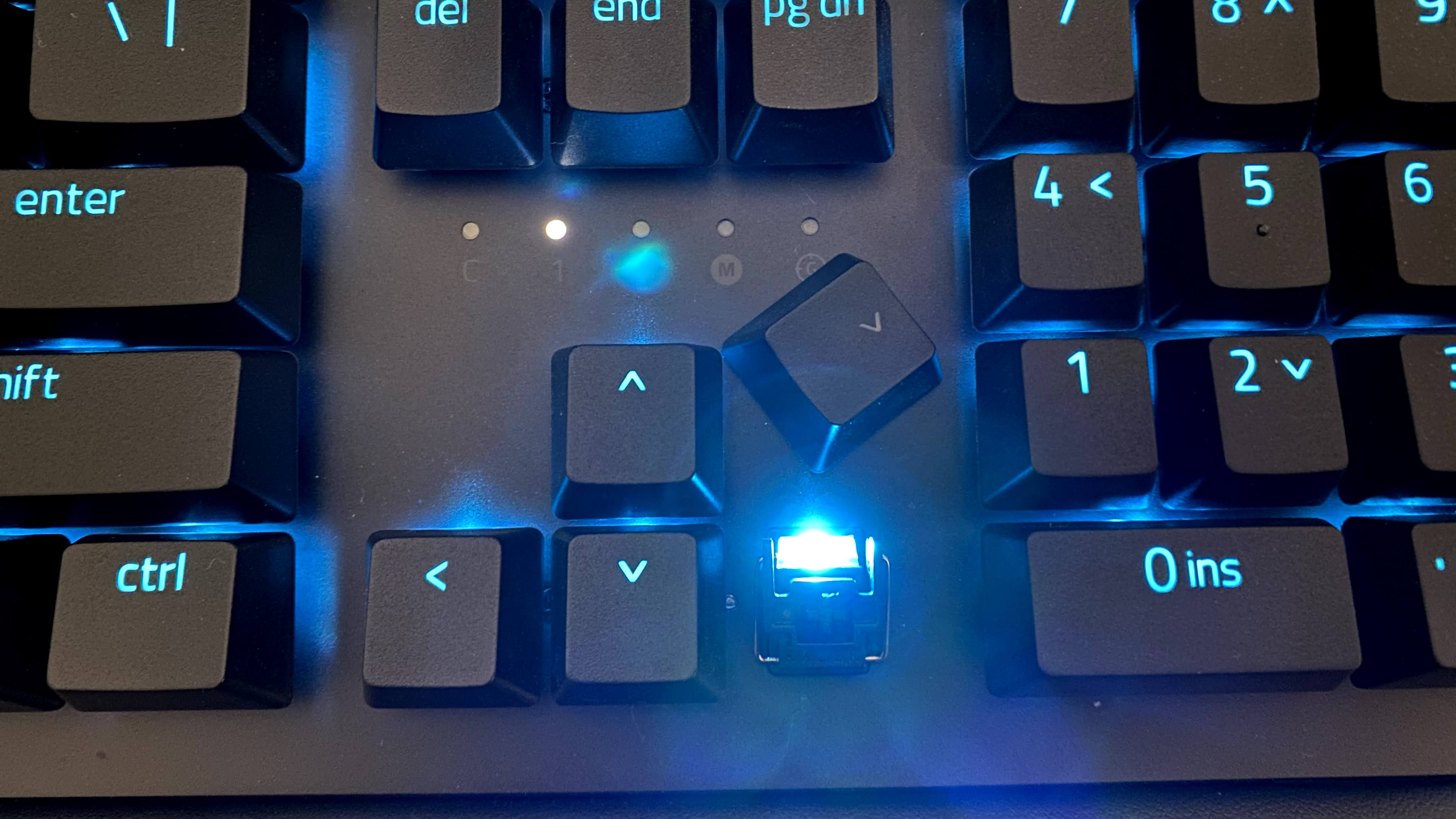
This was a bit difficult to do properly every time - which once again shows how hard it is to vary pressure without resistance - but we sort of got the hang of it after a while. It will certainly need a lot of practise, and extreme fine tuning, to successfully use it in games.
As a keyboard, the Razer Huntsman V2 Analog is brilliant. It’s loud, but not as annoyingly as blue switches, and the responsive keys makes typing on it a pleasurable experience. Thanks to the Razer Synapse software, you can customize every part of the keyboard, change key configurations, set macros, use the Hypershift function, set the RGB lighting, and more. It is an aggressively comprehensive package, and for its price, it is almost warranted.
Buy it if...
You want the latest in keyboard innovation
Regardless of how it works, this is Razer’s most cutting-edge keyboard that will surely define their future premium lineup. Right now, this is keyboard innovation at its best.
You want a feature-rich keyboard
The Huntsman V2 Analog has everything you would need from a keyboard: handsome design, durability, innovative switches, excellent RGB support, USB passthrough, media keys, and more.
Don't buy if...
You want something cheaper
At $249.99, the Huntsman V2 Analog is quite pricey. If you do not require the new analog switches, you can find a similar package for much cheaper.
- Stay up to date on the latest tech news with the TechRadar Newsletter
via Tech Trade
Comments
Post a Comment